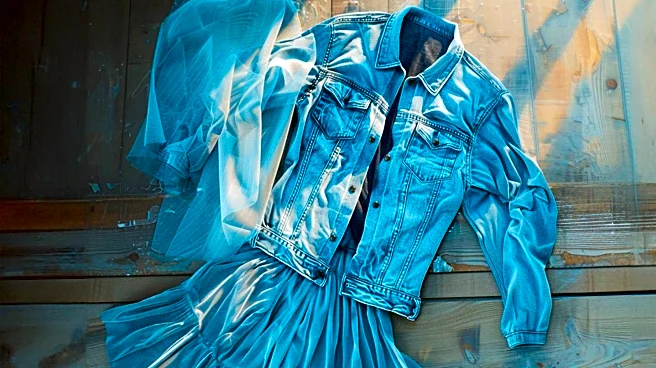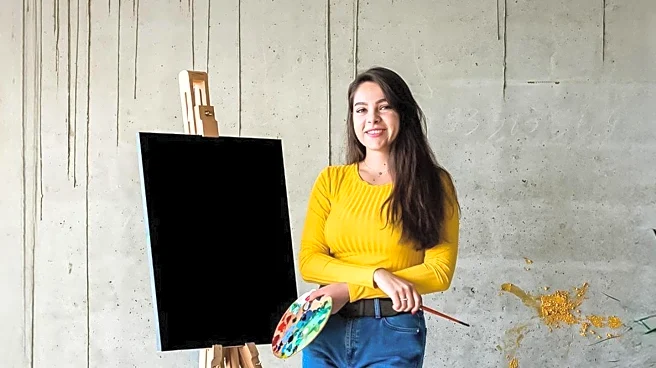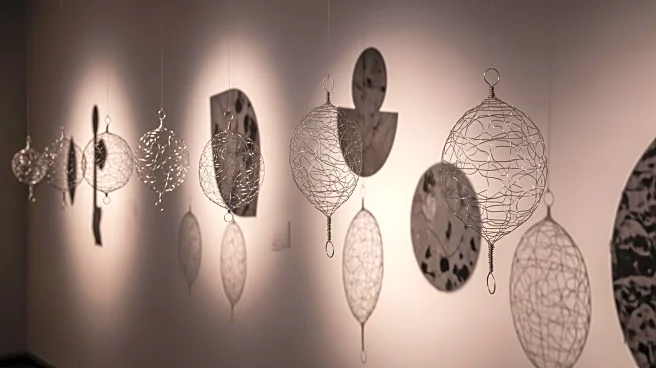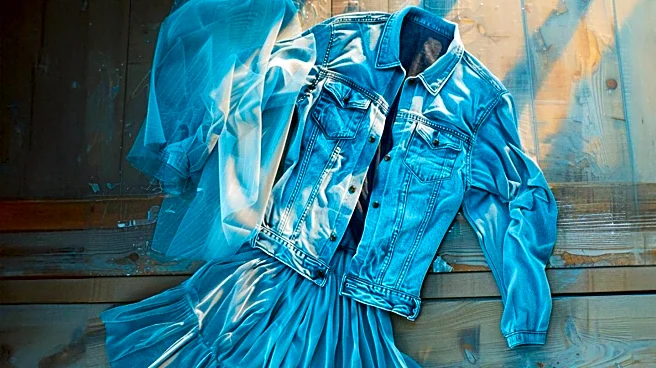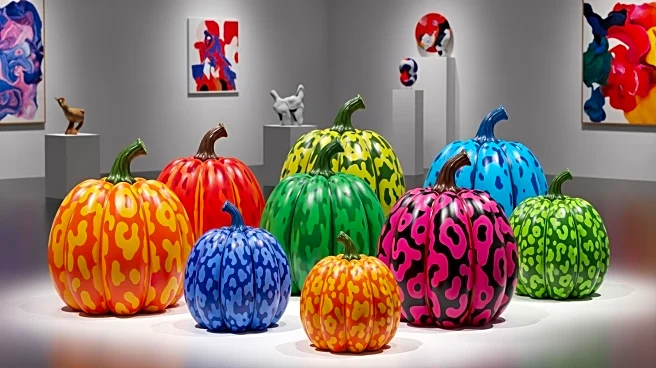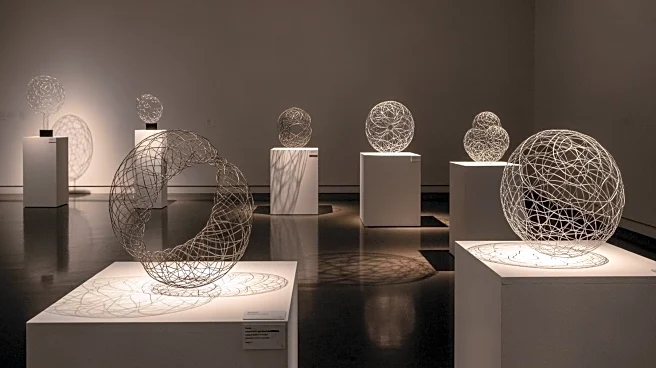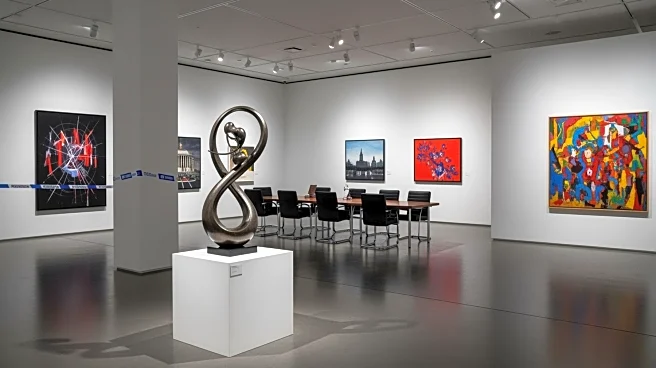What's Happening?
Catherine Walsh, formerly a prominent figure in the cosmetics industry, has made a significant transition into the art world as a collector and patron. Walsh, who previously held high-ranking positions
at Estée Lauder and Coty, has developed a personal art collection characterized by minimalist and contemporary pieces. Her journey into art began with the purchase of a Harry Callahan photograph, which set the tone for her subsequent acquisitions. Walsh's collection includes works by artists such as Donald Judd and Gerhard Richter. She is also the president of the VIA Fund, a philanthropic organization that supports artists and institutions. Walsh's involvement in the art world extends to her role as a trustee at Tefaf and the Fondation Beyeler, and she has been instrumental in bringing significant art installations to public spaces, such as John Gerrard's Surrender (Flag) at the Hayward Gallery.
Why It's Important?
Walsh's transition from the corporate luxury sector to the non-commercial art world highlights a growing trend of successful business leaders moving into cultural philanthropy. Her involvement in art patronage and support for artists through the VIA Fund reflects a broader shift towards private funding in the arts, which can significantly impact the sustainability and growth of cultural institutions. Walsh's influence in the art world, through her board roles and personal collection, contributes to the diversification of art patronage, potentially inspiring other business leaders to engage with the arts. This shift can lead to increased visibility and support for contemporary artists, fostering innovation and cultural exchange.
What's Next?
Walsh's continued involvement in the art world suggests further contributions to cultural institutions and public art projects. As president of the VIA Fund, she is likely to influence the direction of grants and support for artists, potentially expanding the fund's reach and impact. Her role in commissioning and supporting art installations may lead to more collaborations with artists and institutions, enhancing public access to contemporary art. Walsh's personal collection may also evolve, reflecting her ongoing engagement with diverse artistic expressions and her commitment to supporting the arts.
Beyond the Headlines
Walsh's journey from cosmetics executive to art patron underscores the intersection of commerce and culture, illustrating how business acumen can be leveraged to support and promote the arts. Her approach to collecting, which prioritizes personal taste over market trends, challenges conventional notions of art collecting and highlights the importance of individual expression in the art world. Walsh's story also raises questions about the role of private collectors in shaping cultural narratives and the ethical considerations of art patronage.
